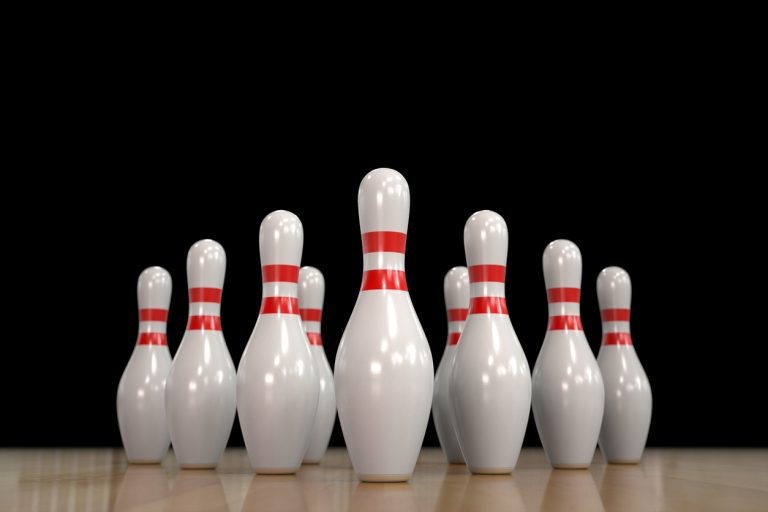Is Bowling on the Rise as a Growing Sport?
If you’re wondering whether bowling is becoming a growing sport, the answer is yes. While it may not be as popular as basketball or football, bowling is seeing an increase in popularity in recent years. According to a report by the Bowling Proprietors’ Association of America (BPAA), the number of people who bowl at least once a year has increased by 10 million since 2010.
One of the reasons for the growth of bowling is its accessibility. Unlike other sports that require a lot of equipment and space, bowling can be played by anyone with a pair of bowling shoes and a ball. It’s also a great social activity, making it a popular choice for group outings and parties. Many bowling alleys also offer food and drinks, adding to the recreational aspect of the sport.
Another factor contributing to the rise in popularity of bowling is the growth of competitive bowling. While professional bowling may not be as well-known as other sports, it has a dedicated fan base and offers opportunities for both amateur and professional bowlers to compete at different levels. Additionally, bowling is now recognized as a varsity sport in many colleges and universities, providing opportunities for young athletes to pursue the sport at a higher level.
The Rise of Bowling as a Competitive Sport
Bowling is no longer just a casual pastime, but a growing competitive sport that attracts both professional and amateur players. The sport has been around for centuries, but its popularity has been on the rise in recent years, with more and more people taking up the sport and participating in tournaments and leagues.
Professional and Amateur Tournaments
Bowling tournaments are no longer just for professionals, but for amateurs as well. The World Bowling Tour hosts open tournaments for bowlers of all skill levels, and the USBC Women’s Championships offer a chance for women to compete at a national level. Not only do these tournaments offer a chance to win prize money, but they also provide an opportunity for bowlers to meet and compete against others from around the world.
Bowling Leagues and Community Engagement
Bowling leagues are a great way for bowlers to stay engaged with the sport and connect with others in their community. The U.S. Bowling Congress (USBC) sanctions thousands of leagues across the country, providing league bowlers with a chance to compete in a structured environment. Leagues also offer a social aspect, with many bowlers forming friendships and bonds that last a lifetime.
Youth and Collegiate Bowling Opportunities
The future of bowling lies in the hands of the youth, and there are many opportunities for young bowlers to get involved in the sport. The USBC offers scholarships to high school bowlers, and many colleges and universities have bowling programs that offer scholarship money to student-athletes. This not only provides a chance for young bowlers to further their education, but also to continue their passion for the sport at a higher level.
In conclusion, the rise of bowling as a competitive sport is a testament to its tradition and enduring popularity. With opportunities for both professional and amateur players, as well as youth and collegiate bowlers, the sport is sure to continue its growth and attract new fans for generations to come.
Technological Advancements in Bowling
Bowling has come a long way since its inception, and technological advancements have played a significant role in the evolution of the sport. Here are some of the most recent innovations in bowling technology.
Innovations in Bowling Center Equipment
Modern bowling alleys are equipped with state-of-the-art technology that enhances the overall experience for bowlers. Bowling centers now feature electronic scoring systems, automatic ball returns, and string pinsetters that eliminate the need for traditional pin machines. The string pinsetters require less maintenance and are more cost-effective, making them an attractive option for bowling centers.
The Role of Social Media and Online Presence
Social media has played a significant role in the growth of bowling as an entertainment industry. Bowling centers and tournament organizers now use social media platforms to promote their events and interact with fans. The industry has also embraced virtual reality simulations, which allow bowlers to experience the sport in a whole new way.
In conclusion, technological advancements have played a vital role in making bowling a more accessible and enjoyable sport. From innovations in equipment to the use of social media and virtual reality, the industry is constantly evolving to meet the needs of tech-savvy bowlers.
Cultural and Recreational Aspects of Bowling
Bowling is more than just a sport; it’s a form of entertainment and socializing that has been enjoyed by people of all ages for decades. Whether you’re a casual bowler or a professional, the game offers a unique atmosphere that is perfect for spending time with friends, family, or colleagues.
Bowling as a Form of Entertainment and Socializing
One of the reasons why bowling has become so popular is because it offers a fun and relaxed environment for people to socialize and have a good time. From glow-in-the-dark alleys to themed nights, bowling alleys have created an atmosphere that appeals to people of all ages and backgrounds. Additionally, many bowling alleys have added entertainment options such as arcades, pool tables, and bars, making it a one-stop-shop for a night out.
Diversity and Inclusivity in Bowling
Bowling is a sport that is open to everyone, regardless of age, gender, or ability. The sport has a long history of inclusivity and has been a part of the Special Olympics since 1975. In recent years, the sport has made strides towards becoming more diverse and inclusive, with organizations such as the United States Bowling Congress (USBC) focusing on promoting diversity and celebrating the sport’s incredible diversity.
Bowling is also becoming more accessible for people with disabilities. Adaptive bowling equipment and ramps have been developed to make the sport more accessible for people with physical disabilities, allowing them to participate in the sport and enjoy the social and recreational benefits that come with it.
In conclusion, bowling is not only a popular recreational activity, but it also offers a unique atmosphere that is perfect for socializing and having a good time. The sport’s long history of inclusivity and accessibility makes it a great option for people of all ages and abilities.
Challenges and the Future of Bowling
Bowling has been a popular sport for many decades. However, in recent years, the sport has faced many challenges. In this section, we will discuss some of the economic factors that have influenced the popularity of bowling and the potential for bowling in the Olympic Games.
Economic Factors Influencing Bowling Popularity
The cost of bowling has been a significant factor in the decline of the sport. Many bowling alleys require a significant investment in equipment and maintenance, which can make it difficult for them to remain profitable. Additionally, the cost of bowling can be prohibitive for many people, particularly those on a tight budget.
Another challenge facing the bowling industry is the decline in league play. League bowling used to generate about 70% of a bowling center’s business, but due to societal and lifestyle changes, it now generates only about 40% of overall bowling business, and is continuing to decline. This decline in league play has led to a decrease in the number of people who participate in the sport.
Despite these challenges, there are some positive signs for the future of bowling. The sport is experiencing a resurgence in popularity, particularly among younger generations. Many bowling alleys are reno-vating their facilities to appeal to a wider audience and offer a more modern experience.
Potential for Bowling in the Olympic Games
Bowling has been considered for inclusion in the Olympic Games for many years. The International Olympic Committee (IOC) has recognized bowling as a sport since 1979, but it has yet to be included in the Olympics.
The potential for bowling in the Olympics could be significant for the sport. It would give bowling a higher profile and could lead to increased participation and interest in the sport. However, there are also challenges to overcome, such as the cost of building a bowling facility and the logistics of hosting a bowling event.
In conclusion, while bowling has faced many challenges in recent years, there are also reasons to be optimistic about the future of the sport. With the right investments and innovations, bowling could continue to grow in popularity and potentially even become an Olympic sport.






